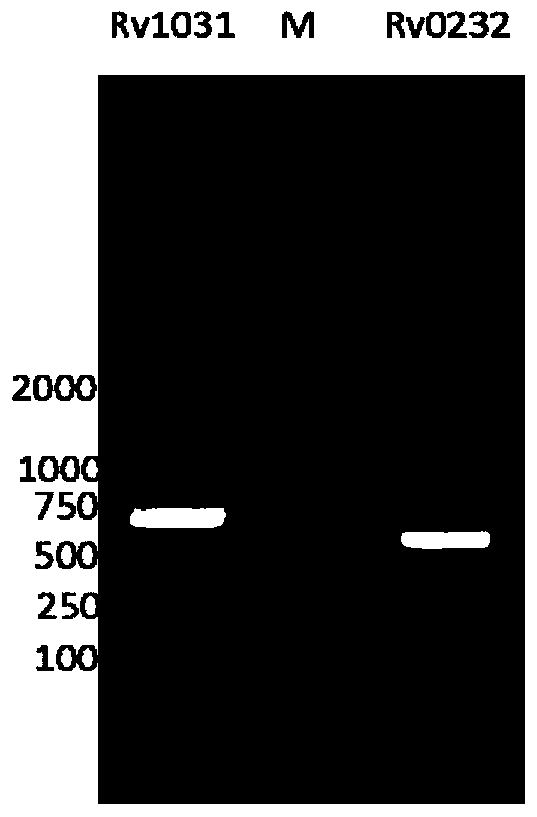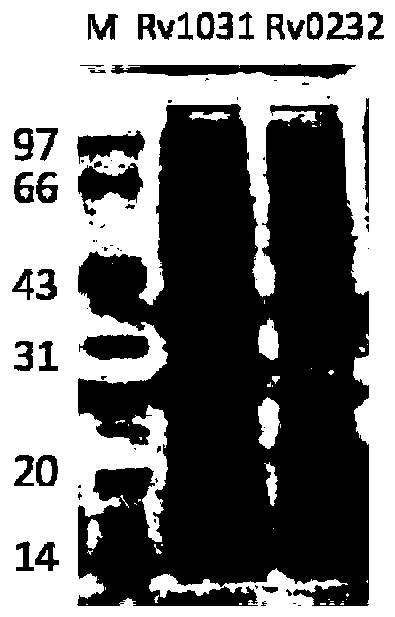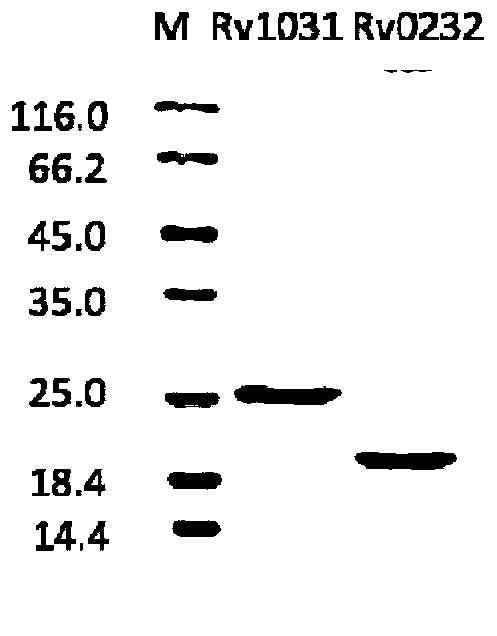Protein and pharmaceutical composition for diagnosis of tuberculosis
A tuberculosis and protein technology, applied in the fields of biochemistry and immunology, can solve problems that cannot be used as a basis for diagnosis, are prone to false positive rates, and are easy to misdiagnose
- Summary
- Abstract
- Description
- Claims
- Application Information
AI Technical Summary
Problems solved by technology
Method used
Image
Examples
Embodiment 1
[0063] Example 1: Cloning and expression of related genes of MTB H37Rv (Gateway method)
[0064] Invitrogen's Gateway technology provides a possibility for protein recombination and expression. It starts from PCR products to create Gateway TM Getting started with cloning. This method is achieved by incorporating attB sites into the upstream and downstream primers, and then co-incubating the PCR amplified product with pDONR TM (including attP site) and Gateway TM BP Clonase TM Enzyme mix. Then transformed into Escherichia coli, the entry clone containing the target gene will be obtained, and attL recombination sites are flanked on both sides of the target gene. This starter clone can be used with Gateway TM The target vector pDEST17 was recombinantly expressed to obtain the target protein quickly and efficiently [Walhout AJ, Temple GF, Brasch MA. et al. GATEWAY recombinant cloning: application to the cloning of large numbers of open reading frames or ORFeomes. Methods E...
Embodiment 2
[0173] Example 2: Protein expression and purification
[0174] 1. Experimental method
[0175] Protein purification is a prerequisite for downstream experiments, and prokaryotic cells can contain thousands of different proteins after expression, some are very abundant, and some contain only a few copies. In order to study a certain protein, the protein must first be purified from other proteins and non-protein molecules in order to remove false positives caused by foreign foreign proteins. High-efficiency and high-purity proteins require high-throughput protein purification. The expressed protein in this experiment is a prokaryotic expression containing a 6His tag, so the affinity of histidine adjacent to the His.Tag sequence and the immobilized metal nickel ion is used for purification.
[0176] 1. Resurrection and amplification of strains
[0177] Prepare the LB medium required for strain recovery and expansion, and add corresponding antibiotics after it cools down. The...
Embodiment 3
[0200] Example 3: ELISPOT analysis
[0201] Enzyme-linked immunospot (ELISPOT) technology is the best technology for detecting the level of cellular immunity in the world today. It integrates many advantages such as high sensitivity, high reliability, high throughput, single cell level, functional detection and low cost. It has been widely used in immunology circles at home and abroad, and has become one of the mainstream immunological detection technologies. The principle of ELISPOT detection is as follows:
[0202] A. Coat the bottom of the detection well with anti-γ-interferon monoclonal antibody.
[0203] B. Isolating lymphocytes from the sample to be tested.
[0204] C. Put the cells to be tested into the detection wells and culture them for about 20 hours, and add the antigen (stimulator) at the same time. During the culture period, T lymphocytes that specifically react to the antigen will be activated and begin to secrete specific cytokines (such as γ-interferon), ...
PUM
 Login to View More
Login to View More Abstract
Description
Claims
Application Information
 Login to View More
Login to View More - R&D Engineer
- R&D Manager
- IP Professional
- Industry Leading Data Capabilities
- Powerful AI technology
- Patent DNA Extraction
Browse by: Latest US Patents, China's latest patents, Technical Efficacy Thesaurus, Application Domain, Technology Topic, Popular Technical Reports.
© 2024 PatSnap. All rights reserved.Legal|Privacy policy|Modern Slavery Act Transparency Statement|Sitemap|About US| Contact US: help@patsnap.com










